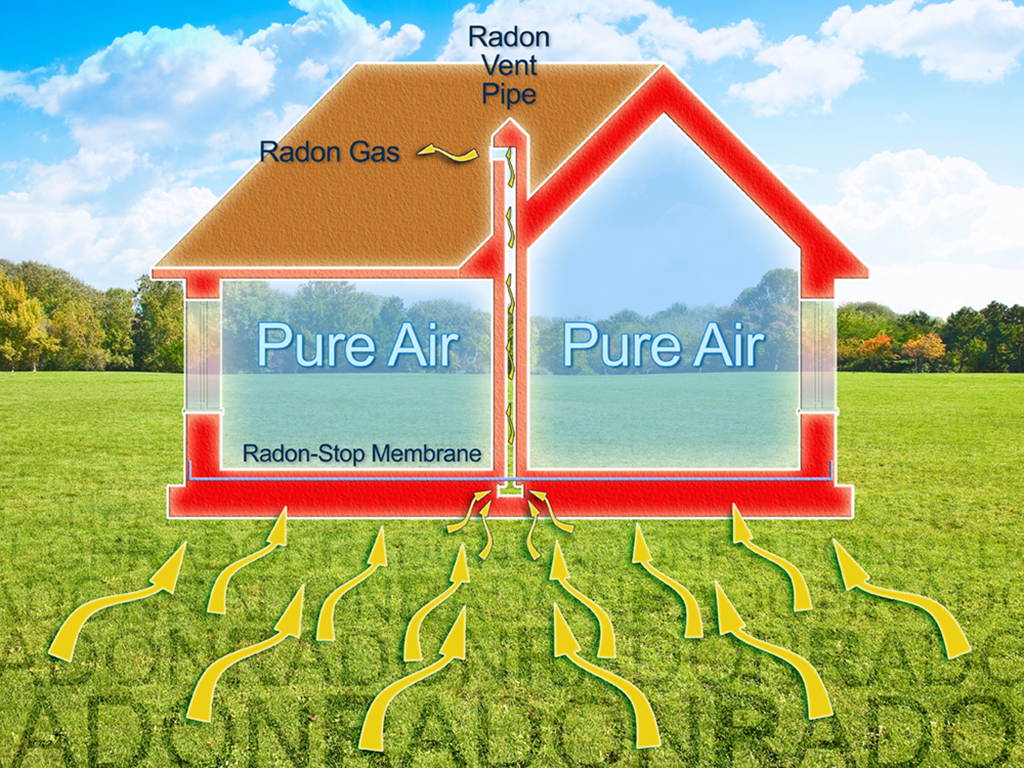It’s common knowledge that smoking is the leading cause of lung cancer. But far fewer people can tell you the next leading cause, which accounts for around 3,200 deaths in Canada each year.
It’s radon — an invisible threat that could be lurking in your home.
The good news is that the team at Healthy Indoor Environments are working to help home buyers better detect this threat.
Radon is a colourless, odourless byproduct of uranium deposits, which can rise up through the soil and seep into buildings. Over time, it can increase your chances of developing lung cancer to one in 20 — and for those who smoke, the risk rises to one in three.
This risk is preventable: anyone can purchase a radon test kit, and those with high levels of radon in their homes can take steps to reduce them. But awareness of radon is still low: a little more than half of British Columbians have heard of radon, and only six per cent have tested for it.
“Radon is an issue across Canada, but there’s geographic variability,” says Noah Quastel, the director of law and policy for Healthy Indoor Environments at the BC Lung Foundation. “British Columbia stands out because there is low radon on the coast, but quite high radon in the Interior. The B.C. Interior is one of the most radon-prevalent places on the planet.”
According to the British Columbia Radon Map, around one in three homes in the Interior have moderate or high levels of radon.
Quastel, a lawyer by training, has been working with the BC Lung Foundation to build on existing health and safety laws and regulation to address radon-related risks, through developing policies and advocating for industry-wide changes. “There are a whole bunch of health and safety provisions out there that radon falls into, but people just don’t know,” he explains.
It’s not only an issue in B.C. Provinces have lagged in implementing laws and policies based on guidelines provided by Health Canada, Quastel says.
“Health Canada has worked hard to publicize the issue [of radon] and create technical standards, but laws around housing, building and community planning fall generally on the provinces, and most provinces have not been taking this up very well.”
As a result, radon has been largely treated as an individual responsibility. Quastel and the Healthy Indoor Environments team are working to change that, in part by making the real estate sector aware of their legal responsibilities around radon.
Quastel’s team was honoured for their efforts by the Real Estate Foundation of BC, who awarded them the Real Estate Land Award earlier this month. The Real Estate Land Award recognizes projects that raise the bar for innovation, collaboration and sustainability in real estate.
Developing policy
Buying a home is a time when people are particularly attuned to safety concerns and health hazards in the home, and presents an opportunity for radon education and awareness.
The Healthy Indoor Environments team reviewed approaches in other provinces, and connected with radon specialists, including the Canadian Association of Radon Scientists and Technologists, to develop their policy proposals.
Quastel’s team then approached the BC Financial Services Authority and the BC Real Estate Association to demonstrate what other groups across the country were doing to mitigate radon, and worked with realtors to develop educational workshops and training materials. Their initial research showed that fewer than 10 per cent of realtors knew enough about radon to advise their clients.
Both organizations have adopted a number of the policy proposals put forward by Healthy Indoor Environments over the last three years. One is the industry-wide recognition that high radon levels are a “latent defect” — a serious health or safety issue that may not be detected in the preliminary stages of buying a home. The BCREA also added radon to the property disclosure statement in 2020, and created detailed regulatory standards to inform realtors and property managers of their responsibilities. These changes have made the B.C. real estate industry a leader in radon awareness and action.
Beyond the real estate sector, Quastel and his team also worked with Landlord BC and the Tenants Resource and Advisory Centre to create guides for landlords and renters, including a template letter for renters to request radon testing of their homes.
Quastel is pleased with the changes that the real estate sector has made so far, though he hopes they continue to build on their efforts — in particular, he hopes to eventually see mandatory testing of radon levels included as a part of home sales. And he is hopeful that the federal government’s commitment to ensuring healthy environments, along with a national awareness of the housing crisis, will help advance radon protections.
“We spend most of our time indoors, in our homes,” says Quastel. “The right to a healthy environment is meaningless if our indoor environments are unhealthy.”
These efforts, he says, would benefit from having a champion in the provincial government to build on the changes in the real estate sector, which are just one piece of the puzzle. “We want people in the Ministry of Health and the Ministry of Environment to really start taking radon seriously, and thinking about a more comprehensive plan to tackle radon in B.C., to get it out of our built environments,” he says.
“We could do this in a single generation. In 20 years, there could be no more radon in our buildings.” ![]()
This article is part of a Tyee Presents initiative. Tyee Presents is the special sponsored content section within The Tyee where we highlight contests, events and other initiatives that are either put on by us or by our select partners. The Tyee does not and cannot vouch for or endorse products advertised on The Tyee. We choose our partners carefully and consciously, to fit with The Tyee’s reputation as B.C.’s Home for News, Culture and Solutions. Learn more about Tyee Presents here.


















Tyee Commenting Guidelines
Comments that violate guidelines risk being deleted, and violations may result in a temporary or permanent user ban. Maintain the spirit of good conversation to stay in the discussion.
*Please note The Tyee is not a forum for spreading misinformation about COVID-19, denying its existence or minimizing its risk to public health.
Do:
Do not: